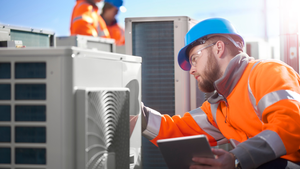Reimagining how cities can leverage holistic platforms for urban mobility solutionsReimagining how cities can leverage holistic platforms for urban mobility solutions
August 25, 2023

When it comes to designing transit and transportation solutions that reduce traffic congestion and improve on-time arrival rates, we seem to have a problem. It seems we are focused on all the wrong things. It’s not all about building a better vehicle, or the technology that is used inside the vehicle. And it’s not about building bigger or more roads and bridges.
It’s about re-engineering the way in which cities move people around. This is important because personal vehicles, mass transit (buses, rail, etc.), ridesharing vehicles, commercial vehicles, emergency first responders and pedestrians are all trying to get from point A to point B in the most efficient manner.
Traffic solutions go beyond bigger roads
Better in-vehicle technology, faster cars, autonomous cars and more roads will not solve our problem individually. The solution is bigger than each of these, and it must have the ability to singularly connect, monitor and orchestrate everyone’s movements in a holistic, technology agnostic manner.
The journey begins with the traveler’s intent to get from point A to point B using the mode(s) that satisfy their needs for cost and convenience. An app from the service provider or a Mobility as a Service (MaaS) app for a multi-modal trip could be used to make the booking. A mobility service provider, such as a bus system, ride-hailing service, robotaxi, or other public or private providers, provides the journey.
When a journey is booked, the mobility service provider needs to decide which vehicle to send, when to send it and what route it should take. To do so, the mobility service provider uses a cloud-based platform that assigns missions to vehicles’ self-driving technology or drivers’ vehicle receptors. These vehicles can be personal cars and trucks, ridesharing, emergency, buses, etc. This platform considers a variety of factors and sends missions that minimize passenger wait times and deadheading for service providers while also meeting their requirements for vehicle utilization and passenger convenience.
Taking a control tower approach
It may be beneficial to think of this approach as a car-specific version of an air traffic control tower. Even though many different brands, sizes and shapes of vehicles are used for air travel, air traffic control is still necessary to direct them safely from gate to gate both on the ground and in the air. Both scheduled and on-demand services are offered by commercial airlines and private aircraft, respectively. Air traffic controllers receive service requests from service providers with directions for the vehicles and pilots, including where to go, when they can go there, and which route to take. Service providers submit their reservations or flights with scheduled departure and arrival times.
On the ground, a similar cloud-based “control tower” technology platform can be used to systematically view each mobility provider (car, bus, rail, etc.) and assign signals to each so that they all move in constant harmony and rhythm with each other.
Key to this platform is the integration of traffic signals and intersections with the flow of traffic, which of course changes based on events, work hour vehicle demand, weather patterns (evacuations, etc.), and the prioritization of emergency response vehicles that need to move freely through certain corridors to get to an injured person or fire, for example. Much of this is already in use in several cities across the U.S., all driven by AI (artificial intelligence).
How AI improves the flow of traffic for everyone
AI promises to streamline traffic flow and reduce congestion for many of today’s busiest roadways and thoroughfares. Smart traffic light systems and the cloud technology platforms they operate on are now designed to manage and predict traffic more efficiently, which can save a lot of money and create more efficiencies not only for the cities themselves, but for individuals also. AI and machine learning today can process highly complex data and traffic trends and suggest optimum routing for drivers in real-time based on specific traffic conditions. By integrating everyone’s real-time routing information, cloud-based traffic management systems can now optimize traffic light timing to the true needs of traffic.
Today’s recognition algorithms offer enhanced insight on the mix of density, traffic, and overall rate of flow. Furthermore, these optimized algorithms can leverage data points by region resulting in a streamline pattern to reduce traffic problems while redistributing flow more optimally. Municipal traffic management systems can then make better decision-making power, and the control system has a much higher degree of failure tolerance as was previously demonstrated in legacy hub-and-spoke systems.
The combination of AI, machine learning and cloud-based technology all have great potential to not only improve the throughput of signalized intersections but reimagine it all together. This advanced technology is already in use with transit agencies and emergency first responders where it is demonstrating a connected coordinated future between GPS, navigational apps, connected autos, and even taxi and ride-sharing services to efficiently combine mobility data into a traffic control system based on real-time data.
Timothy Menard is the founder and CEO of LYT, provider of cloud-based open-architecture smart traffic solutions. LYT makes traffic lights smart by enabling them to see and respond to traffic. By doing so LYT can prioritize first responders and public transportation vehicles so they can get to their destinations faster and safer. The additional benefit is that it streamlines overall traffic flow helping to reduce congestion and emissions in high traffic areas.







